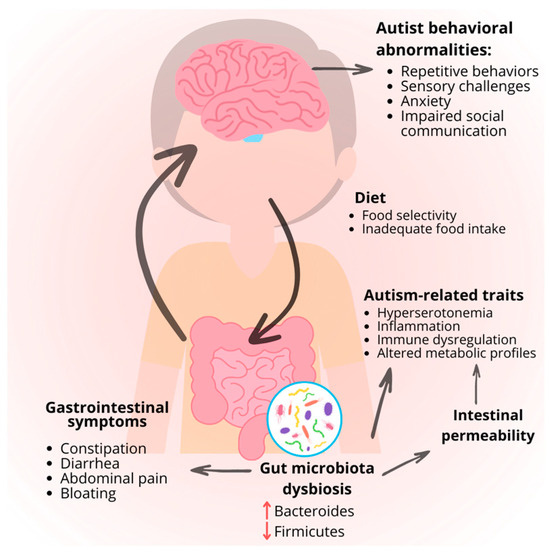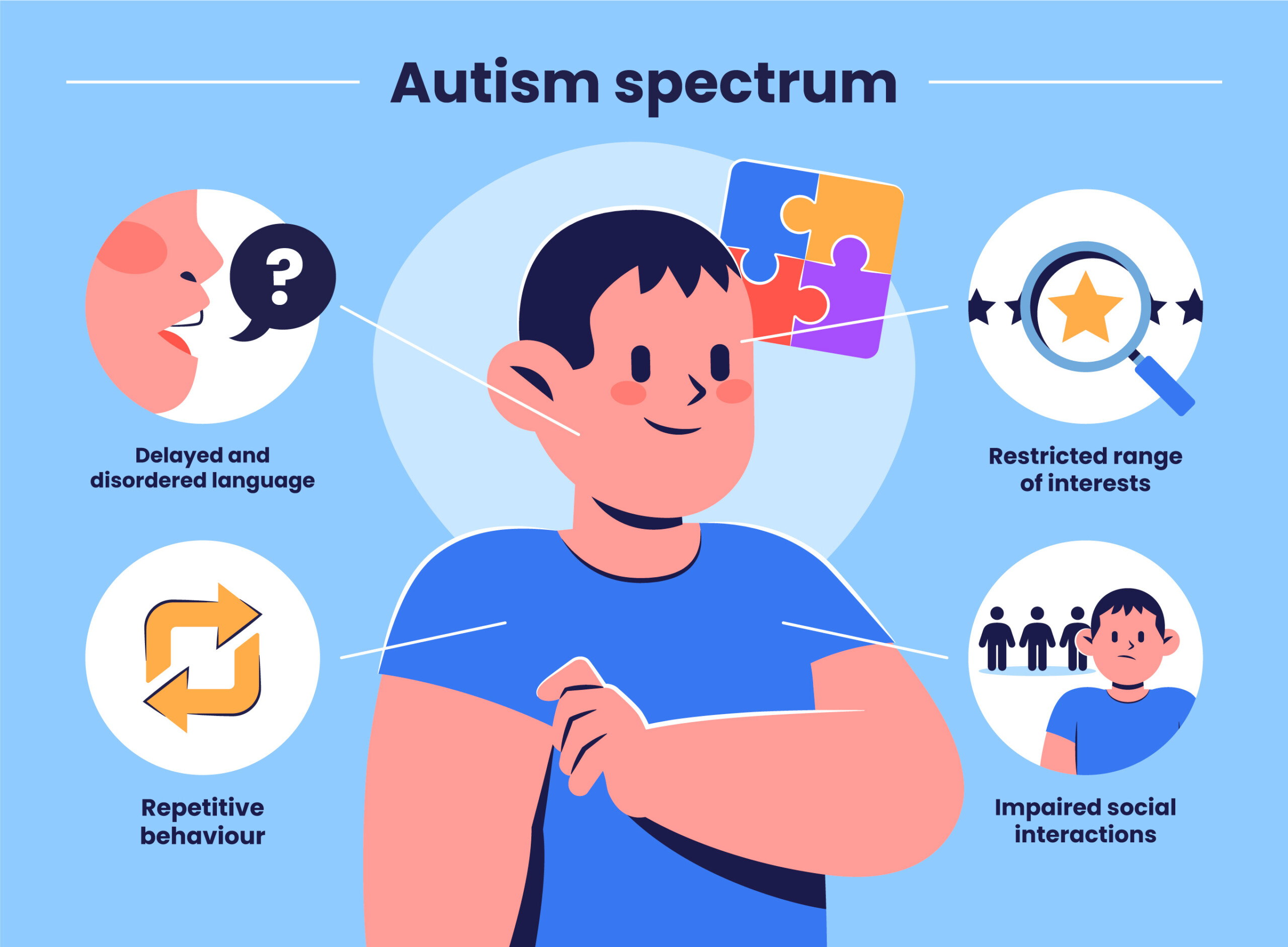Discussing the spectrum with siblings—tips from an Aba Therapist
Discussing the spectrum with siblings—tips from an Aba Therapist
Blog Article
Checking Out Effective Techniques for Supporting People With Behavior Autism
Supporting individuals with behavioral autism calls for a nuanced understanding of their special demands. What particular techniques can you apply to assure these people flourish?
Understanding Behavioral Autism: Trick Characteristics and Obstacles
When you begin to understand behavior autism, you'll discover numerous key features and difficulties that specify the experience for people. Many individuals with behavioral autism typically battle with communication, making it challenging for them to share their demands or emotions successfully. You may observe recurring behaviors, such as hand-flapping or rocking, which serve as coping mechanisms for taking care of stress or sensory overload. Social communications may be challenging; individuals may locate it tough to read social signs, leading to misunderstandings in relationships.
Furthermore, sensory sensitivities prevail, triggering pain in environments with loud sounds or intense lights. These challenges can lead to anxiety or aggravation, affecting every day life. It is essential to identify that each individual is special, and their experiences may vary. Understanding these attributes enables you to come close to support with compassion, fostering a positive connection that can boost their well-being and urge growth.
The Significance of Personalized Interventions
When it pertains to supporting people with behavior autism, personalized interventions are crucial. By developing tailored intervention strategies that concentrate on specific toughness, you can substantially improve their advancement. Teaming up with assistance teams assures every person is aligned in offering the very best treatment feasible.
Customized Treatment Plans
Developing tailored intervention strategies is essential for successfully sustaining people with behavior autism, as each person's demands, staminas, and challenges vary considerably. By crafting these customized strategies, you can attend to details actions and goals, ensuring an extra focused method. Start by collecting in-depth information regarding the individual, including their choices, causes, and past experiences. Collaborate with specialists, caregivers, and educators to identify methods that reverberate with them. Consistently monitor progress and readjust the strategy as required, ensuring it remains relevant and reliable. This adaptability not only promotes engagement but likewise promotes a feeling of possession and empowerment for the person. Eventually, tailored intervention strategies can greatly boost the quality of support you supply, resulting in even more purposeful end results.
Private Toughness Assessment
A private strengths evaluation is essential for creating personalized interventions for people with behavior autism. By concentrating on each individual's unique capabilities, you can develop methods that resonate with their interests and abilities. This strategy not just enhances engagement but also boosts positive self-image.
When you determine toughness, like exceptional memory or creative skill, you can customize treatments that leverage these areas. This not only makes learning much more reliable yet additionally fosters a sense of accomplishment. Keep in mind, every person has distinct capabilities; recognizing them equips you to craft purposeful experiences.
Including these toughness right into day-to-day regimens and restorative methods can result in enhanced end results. Inevitably, prioritizing staminas guarantees that treatments are not just reliable yet also enriching for the individual.
Collaborative Assistance Groups
Identifying private strengths establishes the stage for forming collective assistance teams that concentrate on individualized treatments. By bringing with each other professionals, relative, and the individuals themselves, you produce an encouraging network that customizes approaches to satisfy specific needs. Each staff member contributes special understandings, making certain a thorough technique that attends to behavioral difficulties effectively.
This adaptability is essential, as it assists every person engaged stay straightened with the individual's objectives and preferences. In addition, involving in this team-based strategy equips individuals with autism, promoting their self-advocacy and confidence.
Evidence-Based Communication Methods

When collaborating with individuals on the autism range, using evidence-based communication strategies can significantly improve their capacity to link and share themselves. Utilizing aesthetic assistances, like image timetables or interaction boards, helps make clear assumptions and cultivates self-reliance. Streamlining language and utilizing concrete terms enables far better understanding, decreasing disappointment.
Incorporating social stories can prepare individuals for various situations, educating them proper reactions and behaviors. Motivating making use of assistive modern technology, such as speech-generating devices, equips people to communicate more efficiently. Additionally, using predictable atmospheres and regular regimens can give a complacency, making interaction more reliable.
Bear in mind to be individual and provide them time to process your words. Taking part in active listening, where you reflect their thoughts and sensations, can reinforce your link. By executing these techniques, you'll produce a more helpful communication ambience for people with autism.
Creating Encouraging Settings
Developing encouraging environments for people with behavioral autism starts with implementing organized routines that provide predictability and safety. You'll likewise want to make sensory-friendly spaces that cater to specific needs, minimizing frustrating stimuli. Furthermore, utilizing positive support techniques can urge preferred actions and promote a sense of achievement.
Structured Regular Implementation
Establishing an organized routine can considerably improve the environment for people with behavior autism. By developing a constant routine, you provide predictability, which can decrease anxiousness and confusion. A well-structured setting fosters self-reliance and self-confidence, supporting their general development.
Sensory-Friendly Spaces Layout

Positive Reinforcement Techniques
When you integrate favorable reinforcement techniques into your approach, explanation you can greatly improve the knowing and behavior results for individuals with autism. This involves awarding and acknowledging wanted habits, which motivates repetition of those actions. Begin by determining what inspires the private-- be it praise, tokens, or unique tasks. Enhance positive actions instantly to develop a clear connection between actions and benefit. Uniformity is vital; guarantee that everybody included in their treatment uses the same reinforcement approaches. You can additionally gradually raise the complexity of tasks as individuals end up being extra comfortable, strengthening their progression. By developing an environment where favorable behaviors are acknowledged, you promote self-esteem and a feeling of accomplishment, eventually sustaining their growth and well-being.
Collaborative Approaches: Collaborating With Family Members and Professionals

Involving family members in decision-making encourages them and enhances their ability to support their loved ones. Specialists, including therapists and teachers, can give valuable resources and training that even more aid family members.
You need to additionally appreciate each event's point of view, acknowledging that households recognize their kid finest while specialists bring specialized knowledge. By crafting customized plans together, you create a customized approach that deals with distinct requirements. Autism Behavioral Therapy. Inevitably, this partnership not only profits the private with autism but additionally strengthens the support network bordering them, making it much more effective and cohesive
Incorporating Social Abilities Training
Building on the strong collaborations created between professionals and households, including social skills training can substantially improve the support given to individuals with behavioral autism. This training aids you instruct essential communication abilities, such as initiating conversations, recognizing non-verbal signs, and reacting suitably in social circumstances.
By utilizing structured activities, role-playing, and real-life circumstances, you develop possibilities for practice in a safe environment. Encourage individuals to take part in group settings where they can engage with peers, cultivating friendships and improving their convenience in social contexts.
It is necessary to tailor the training to every person's distinct staminas and challenges, guaranteeing they feel capable and certain. Routinely including responses from both professionals and family members can fine-tune these techniques, making social skills training much more effective. Eventually, you're empowering people with the devices they need to navigate social interactions successfully and construct purposeful partnerships.
Keeping An Eye On Development and Adjusting Approaches
As you execute social abilities training, it's essential to check progress and change strategies appropriately. Keep track of habits, noting troubles click for more info and improvements. Usage devices like charts or checklists to imagine development and determine patterns. Regularly review your monitorings to assess what's working and what isn't.
Engage the person in representation, asking just how they really feel about their development and what challenges they encounter. This responses is important for customizing your method. Don't hesitate to customize them. if specific techniques aren't producing outcomes.
Include a range of techniques to keep the training dynamic and engaging. Team up with various other caregivers or specialists for fresh viewpoints and insights. Keep in mind, adaptability is crucial; what jobs today may not function tomorrow. By staying responsive and mindful, you produce an environment that promotes development and advancement. Constantly commemorate success, no issue just how little, to encourage ongoing initiative and interest.
Frequently Asked Concerns
What Are the Common Misconceptions Concerning Behavioral Autism?
You may go think behavior autism just affects communication, however it includes far more. Many think all individuals with autism act the exact same, ignoring their unique qualities and abilities. It's necessary to comprehend each person's differences.
Just How Can Technology Assist in Supporting Individuals With Behavior Autism?
Modern technology can enhance communication, giving tools like applications for social skills and habits tracking. You can use digital reality for immersive experiences, and wearable gadgets can keep track of moods, aiding you support people effectively.
What Function Do Sensory Processing Issues Play in Behavioral Autism?
Sensory processing issues can considerably influence behavior. You could observe that overwhelming sensory input causes stress and anxiety or meltdowns. Comprehending these obstacles aids you develop a more helpful environment for people experiencing sensory overload.
Exist Particular Dietary Recommendations for People With Behavioral Autism?
Yes, specific dietary recommendations can help. You could take into consideration a gluten-free or casein-free diet plan, which some find advantageous (Aba Therapist Near Me). Constantly consult a healthcare professional prior to making considerable modifications to assure it's right for you or your enjoyed ones
Exactly How Can Peers Be Educated to Assistance Individuals With Behavior Autism?
To enlighten peers, you can organize workshops, create useful materials, and urge open discussions. Involving tasks, like role-playing situations, assist them recognize challenges dealt with by people, fostering empathy and reliable assistance within the area.
Checking Out Efficient Approaches for Supporting Individuals With Behavioral Autism.
Developing tailored intervention plans is necessary for effectively supporting people with behavioral autism, as each person's difficulties, toughness, and needs differ substantially.A specific staminas analysis is crucial for developing personalized treatments for individuals with behavioral autism.To support people with behavioral autism, developing sensory-friendly rooms is necessary, as it can significantly boost their convenience and focus.Collective strategies are necessary for supporting individuals with behavior autism, as they foster a solid collaboration between family members and professionals.
Report this page